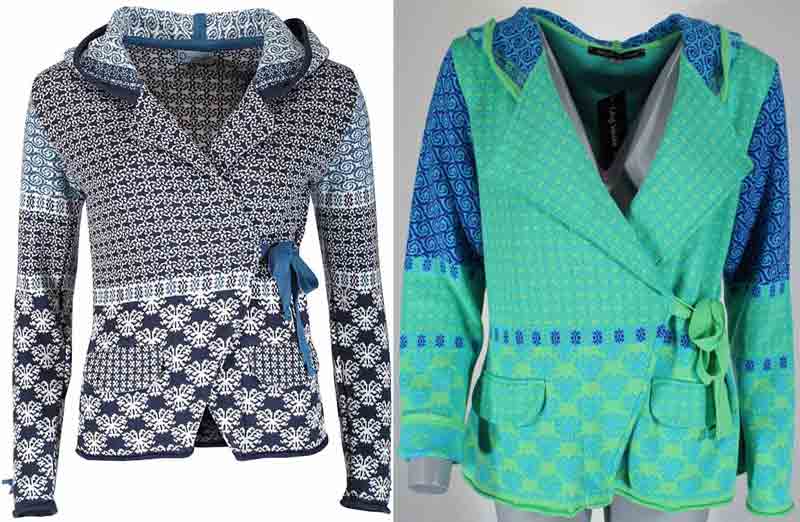Free initial assessment
Over 20 years of experience in design law
Thomas Seifried has over 20 years of experience in design law and has also been a specialised lawyer for intellectual property law since 2007. He is the author of specialist books and has conducted many successful proceedings before courts and public authorities.
+49669150760
You can send us your documents here. We will treat your enquiry as strictly confidential.
Our initial assessment of your case is free of charge.
In court proceedings, however, the defence of inability to protect is only possible to a limited extent
However, a presumption of validity applies. Therefore, in legal proceedings for infringement of designs and Community designs, the objection of lack of novelty and lack of individual character is only possible without restriction in proceedings for the grant of an interim injunction. In ordinary (main) proceedings, this objection must be raised by filing a counterclaim for a declaration of invalidity (§ 52a German Design Act, Art. 90 (2) CDR).
Relationship to copyright
A special "design height" is expressly not necessary in design law (BGH judgement of 22.04.2010 - I ZR 89/08 - Verlängerte Limousinen) more. It is thus a fundamentally different right in relation to copyright law and also to the former German design law. The former German design law required "design height", i.e. more than average design skills. This is outdated. The German registered design (formerly: design patent) is not a "small copyright". The same applies to the registered Community design and the unregistered Community design. It is only the "individual character", i.e. the distinctiveness from other designs, that matters, but not any peculiarity or individual character.
DPMA and EUIPO do not examine requirements for protection of designs and models
The protection requirements "novelty" and "individual character" are not examined by the offices when the application is filed. Neither the EUIPO, which is responsible for the registration of the European registered Community design, nor the DPMA, which is responsible for the German registered design, examine these requirements for protection. The Community design and the registered design are thus practically unexamined IP rights. Whether a registered design or a Community design is legally valid is therefore decided - depending on the type of proceedings (see above) - only in infringement proceedings before a court or in invalidity proceedings before the DPMA or the EUIPO.
Novelty according to § 2 para. 2 Germn Deisgn Act (DesignG) or Art. 5 GGV
Whether an industrial property right has arisen at all in a design essentially depends on whether it was "new" and had "individual character" at the time of filing the application or - in the case of an unregistered Community design - at the time of "disclosure". A design has "novelty" if no other design differing only in insignificant details has been disclosed before the date of filing of the application (Sec. 2 (2) Design Act; Art. 5 CDR). Therefore, a design is new if at the time of filing (in the case of registered Community designs or registered designs) or at the time of disclosure (in the case of unregistered Community designs) neither an identical design nor a design differing only in insignificant details existed anywhere in the world. At the same time, any identical or almost identical design published even outside the European Community will result in a design no longer being considered new.
CAUTION: Market launches and product presentations - for example at trade fairs - outside the Community can therefore destroy the novelty of one's own(!) design. The design is then no longer protectable as an unregistered Community design. As a rule, the only remedy is to protect the design in the respective non-Community country of market launch by registering it with the respective competent office.
In this context, items from another type of product can also be novelty-damaging. In any case, the Higher Regional Court of Frankfurt held that game discs and game pieces could be novelty-damaging for shopping chips. They had "close points of contact in terms of manufacture and intended use" and, after all, in the case to be decided, the proprietor of the Community design had itself manufactured toys (OLG Frankfurt am Main v. 18.02.2016 - 6 U 245/14 - Invalidation of a Community design for lack of individual character).
Not only items for identical types of products (shopping trolley chips) can be novelty-damaging, but also for similar types of products (game chips).
Whether a design was new and had individual character at the time of filing the application is only proven in court (in an invalidity counterclaim) or in invalidity proceedings before the Office (EUIPO or DPMA). In a judgement of 18 February 2016, the Higher Regional Court of Frankfurt am Main (OLG Frankfurt, judgement of 18 February 2016 - 6 U 245/16 - Invalidation of a Community design for lack of individual character) commented on a question largely unresolved by case law: To what extent can an already existing (disclosed) design originating from another type of product also be held against a Community design as having prior knowledge?
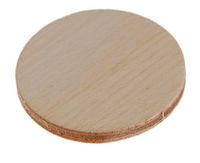
The action was brought by the proprietor of the represented Community design. The indication of the product in the design application was: "Chips for shopping trolleys". The defendant sold a wooden shopping trolley chip. The defendant responded to the action for infringement of the registered Community design with an invalidity counterclaim. It argued that the Community design was not protectable. It was neither new at the time of filing the application nor did it have individual character, as required by Article 4 of the Community Design Regulation. Chips for shopping trolleys had long been known. Chips made of wood had also existed for a long time, namely three-layered tokens and playing pieces. The question was therefore: Can products of a different type of product (in this case: game pieces or tokens) also be opposed to a Community design?
The significance of the product indication in the application for a Community design
The indication of the product in the Community design application was "Chips for shopping trolleys" (Locarno Classification 08.07). The indication of the product is for administrative purposes or search only.
Type of product relevant for scope of protection
Unlike the indication of the product, it is relevant for the scope of protection of a Community design to which type of product it actually belongs. This is because the affiliation to a certain product type (which did not necessarily have to be correctly identified in the application, see above) ultimately determines its scope of protection. The importance of the product category is relevant for the scope of protection insofar as it depends on the designer's freedom of design for this product (BGH v. 12.07.2012 - I ZR 102/11 - Kinderwagen II; OLG Frankfurt v. 31.1.2013 - 6 U 29/12 - Henkellose Tasse). A high design density (i.e. many designs) and a small scope of design freedom of the designer may lead to a narrow scope of protection. Even minor differences may therefore create a different overall impression on the informed user (BGH loc. cit. - Kinderwagen II). According to case law, this fictitious "informed user" who assesses the overall impression of a design also appears to act in relation to the product, i.e. to compare designs of a certain product category (e.g. OLG Frankfurt v. 26.06.2014 - 6 U 17/13, under II.1.b) bb) bbb) (3) - Möbelgriff).
Are citations from different product types possible?
Whether and to what extent a Community design (or a German registered design) can also be opposed to products of another type of product as being detrimental to novelty has not yet been clarified by the highest courts. In any case, the Higher Regional Court of Frankfurt is of the opinion that game discs and game pieces can be opposed to shopping chips. They had "close points of contact in terms of manufacture and intended use" and, after all, in the case to be decided, the proprietor of the Community design had itself manufactured toys. The OLG Frankfurt had therefore declared the above-mentioned Community design for shopping chips to be invalid because of already known round wooden game pieces.
"Disclosure" according to Art. 7 CDR or § 5 German Design Act (DesignG)
A design is "disclosed" according to Art. 7 CDR or Sec. 5 German Design Act (DesignG) if it has been perceived by the professional circles operating in the Community, for example, if it has been exhibited at a trade fair, reproduced in a catalogue or used in advertising. "Disclosed" therefore means made known, exhibited, used or otherwise published, and this worldwide. Own publications can therefore also be detrimental to a later application for the same design, because then the design is no longer new at the time of application. The publication of a registered design in the German Design Gazette also gives rise to an unregistered Community design.
Tip: First publications of a design, even under the protection of a confidentiality agreement, should be carefully considered. This is because even a breach of a confidentiality agreement can still result in disclosure (BGH GRUR 1993, 466 - Reprint-Versendung).
Exception 1: grace period according to § 6 DesignG or Art 7 II CDR
If a design is applied for within 12 months after the first disclosure by the designer or with his consent, this does not harm the novelty (so-called "grace period", Sec. 6 German Design Act; Art. 7 II CDR). The designer can thus test his design on the market before he decides to incur costs for filing the design or design patent application. Thus, certain pre-publications do not harm the novelty of a design or a design. A twelve-month grace period as in the case of the registered design naturally does not exist in the case of the unregistered Community design.
Problems arise if the design was not pre-published on its own, but only as a component of an entire product. Does the grace period then also apply if a whole product (shoe) was pre-published, but only one element of it (shoe sole) was registered?
The example BGH, decision of 23.02. 2012 - I ZR 68/11 - Milla: Does the grace period for a shoe sole protected as a design apply even if it was only pre-published as a whole shoe? The case : The plaintiff was the owner of the following design (today: registered design) for shoe soles:
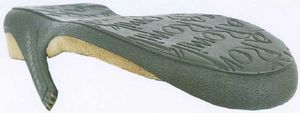


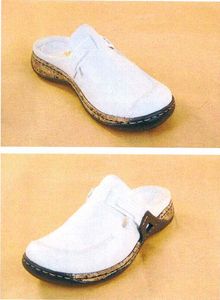
The design patent was filed on 23 April 2007. The defendant later offered the following sabot:
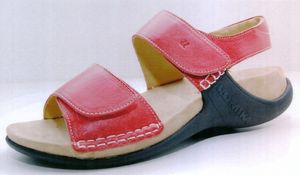
The injunction respondent defended itself by submitting the following older registry entries for whole shoes:
These designs had already been applied for by the plaintiff on 12 September 2006. The defendant therefore believed that the design in suit for a shoe sole, registered on 23.4.2007, was no longer new at the time of filing. This was because the shoe sole was already known with the entire shoes previously applied for by the plaintiff. This prior knowledge could not be detrimental to the plaintiff only if the twelve-month grace period applied to these entire shoes. According to this, an already known design does not harm novelty if it was published during the twelve months prior to the filing date by the designer or a third party informed by the designer.
The question was therefore: Does the grace period also apply if the design was not published on its own (here: shoe sole), but only as part of a complete product (here: a whole shoe)?
The BGH answered the question in the affirmative: According to the law (§ 6 German Design Act, DesignG), a design in the sense of design law is also a part of a product. Then it is consistent to extend the grace period also to those pre-published products which recognizably contained the design as a part.
Exception 2: "Specialist circles" could not know the design - BGH "Garden pavilion".
A disclosed design is also not new if the "circles specialized in the field" in the relevant branch of industry could not have known the comparable older design in the normal course of business: It is not required that the circles skilled in the art have actually learned of the design. Therefore, a publication of a design in the showroom of a Chinese provincial city need not be detrimental to the protection of a comparable younger design, if such publication could not have been known in the normal course of business by the circles specialised in the sector concerned, operating in the European Union (see ECJ v. 13.02.2014 - C-479/12 - H. Gautzsch Großhandel GmbH & Co. KG v. Münchener Boulevard Möbel Joseph Duna GmbH; BGH v. 16.08.2012 - I ZR 74/10 - Gartenpavillon, para. 21).
Eigenart according to § 2 para. 3 German Design Act resp. Art. 6 CDR
According to Art. 6(1)(2) CDR (literally corresponding to Sec. 2(3) German Design Act), a registered Community design has individual character if the overall impression it produces on the informed user differs from the overall impression produced by another design, i.e. any other design, which has been made available to the public before the date of filing of the application.
Only distinctiveness, not peculiarity
Peculiarity means distinctness (in contrast to the level of creation required by copyright law or the "level of design" previously required in design law) from other designs from the known set of forms. "Peculiar" is a design/design if it evokes a different overall impression than an older design/design. The distinctiveness depends on the designer's freedom of design in the respective type of product (e.g. in "handbags"). Special peculiarity is not (any longer) a prerequisite.
In design law, the "informed user" is the person who assesses the individual character (Sec. 2 III German Design Act or Art. 6 (1) CDR). The informed user belongs to the group of persons who uses the registered design or the registered Community design or the unregistered Community design in practice and knows how to judge different designs/designs according to their appearance.
The informed user hides unprotectable technical features
"Informed" is the user if, on the one hand, he has basic knowledge of the requirements for protectability from a legal point of view - e.g., he fades out technical features in a comparison - and, on the other hand, he knows the function, mode of action and scope of application of the respective product from a factual point of view. He has certain general knowledge of the design and finally has at least average abilities in terms of judgment, education intellect, style and taste.
Informed user can also be a five year old child
The informed user is thus to be placed between the average consumer ("target public") and the expert (OLG Frankfurt am Main, judgment of 27.03.2008 - 6 U 77/07), BeckRS 2008, 23619). However, the informed user can also be a 5- to 10-year-old child or the marketing manager of a company (EuG GRUR-RR 2010, 189 - Pepsi "rapper").
Design freedom decreases with pattern density
According to the Design Act and the Community Design Regulation (CDR), whether a design has individual character is no longer assessed in the abstract, but always on the basis of each concrete, individual, previously known design. Thus, a fictitious abstract individual character of the entire prior-known set of shapes with which the design is compared is not constructed, but an individual comparison applies (BGH v. 19.5.2010 - I ZR 71/08 - Untersetzer, para. 14). Thus, individual character is a prerequisite for protection. However, it has no influence on the scope of protection of a design (BGH Untersetzer loc. cit.).
The freedom of design in turn depends on the design density in the relevant product class. Design density means: How many designs are there in the product class? There is therefore an interaction: the higher the pattern density, the less the design must be distinguishable from other designs.
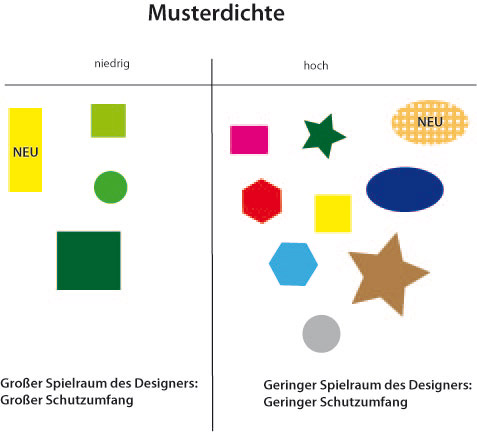
What must the sample be compared to - individual comparison or overall comparison?
A design has individual character if its overall impression differs from that of another design (Art. 1 CDR). The question therefore arises whether, in order for a design to be protectable at all, it must be distinguishable from one or more very specific designs (individual design comparison)? Or must it be distinguishable from a combination of different features from older designs (overall feature comparison).
The ECJ says: The design is always compared with very concrete older designs, but not with a sum of features known from older designs (ECJ v. 19.06.2014, C-345/13 - Karen Millen Fashions v. Dunnes Stores). In doing so, it follows the BGH. In 2010, the BGH had already determined that the question of whether a design has individual character is not to be assessed in the abstract, but always on the basis of each concrete, individual, previously known design. Thus, a fictitious abstract individual character of the entire previously known set of shapes with which the design is compared is not constructed, but an individual comparison applies (BGH v. 19.5.2010 - I ZR 71/08 - Untersetzer, para. 14).
Design infringement depending on the scope of protection
Protection against all patterns that do not leave a different overall impression
The scope of protection of a (European) registered Community design, an unregistered Community design and (German) registered designs determines whether a design is infringed. It does not only cover identical designs. Rather, the scope of protection also includes any similar design that does not create a different overall impression on the informed user. Here, there is an interaction between freedom of design and design density in the relevant product class on the one hand, and distinctiveness on the other: the higher the design density, the less the design must be distinguishable from others.
On the scope of protection for identical basic designs but differing in colors
The imitation of a design which, however, differs in the colors does not have to be an infringement of a design: OLG Frankfurt v. 12.05.2015 - 11 U 104/14 - Scope of protection of a colored fabric design. However, the EUIPO regularly denies a different overall impression if only the color deviates (e.g. OHIM v. 26.2.2009, OHIM-BK R 1942/2007-3 - Remote control). Case law also considers color deviations to be significant only if it is an unusual color design (e.g. LG Düsseldorf v. 13.08.2015 - 14c O 98/13 - Zentrierstifte). This will hardly ever be the case with single-color patterns.
Scope of protection of a design
Scope of protection and design density
The pattern density determines the scope of protection of a design. A low pattern density leads to a large scope of protection of a design. Conversely, a high design density leads to a small scope of protection. When determining the scope of protection under Art. 10 II CDR - as well as when determining the individual character under Art. 6 II CDR - the degree of freedom of the designer in developing his design must be taken into account. There is an interaction between the designer's scope of design freedom and the scope of protection of the design: A high design density and thus a small scope of design freedom of the designer leads to a narrow scope of protection of the design On the other hand, a low design density and thus a large scope of design freedom of the designer leads to a broad scope of protection of the design (BGH, judgment of May 19, 2010 - I ZR 71/08 - coaster). The consequence: even major deviations are still covered by the scope of protection, i.e. they are infringements of the design. Conversely, a large design density leads to a small scope of protection, so that even minor changes lead to a different overall impression.
Scope of protection and utilization of the designer's creative leeway
The scope of protection is also influenced by the extent to which the designer/creator has kept his distance from the design vocabulary (i.e. from already existing designs) (BGH Kinderwagen II).
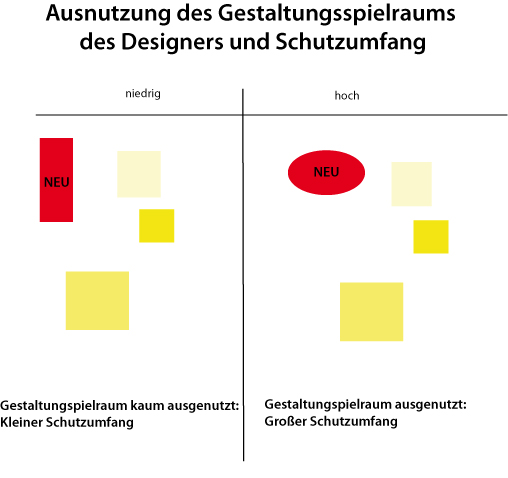
Do colors other than those used in a design patent or registered design result in a different overall impression?
A different color can in itself lead to a different overall impression. However, if two designs differ only in color, this difference is usually underweighted by case law (so-called "color shift", see OLG Düsseldorf v. 21.12.2010 - 20 U 144/10 - Rankenmuster). Other colors, on the other hand, lead to a different overall impression if light and dark elements are interchanged (cf. OLG Frankfurt v. 12.05.2015 - 11 U 104/14 - Schutzbereich eines farbigen Stoffmuster).
In short, a mere change in color only leads to a different overall impression if this changes the shapes of the design. The EUIPO regularly denies a different overall impression if merely the color deviates (e.g. OHIM v. 26.2.2009, OHIM-BK R 1942/2007-3 - Remote control).
"Technicality" - No design protection for technically related features.
Is the design technically...
According to Art. 8 I CDR and Sec. 3 I No. 1 Design Act, design protection is excluded for such appearance features which are exclusively caused by their technical function. This ground for exclusion of protection is called "technicality". Thus, in order for a design to be protectable at all, a creative achievement is necessary.
... or does the design have a "design surplus"?
The ECJ has clarified in the "Centering Pins Decision" (ECJ GRUR 2018, 612 - DOCERAM/Ceram) that it does not matter here whether the same technical function could also be achieved with alternative designs. Because otherwise protection under design law would be equivalent to patent protection in these cases. According to the case law of the ECJ, therefore, all designs are excluded from design protection where, according to the objectively relevant circumstances, considerations other than the fulfillment of the technical function play no role. A technical conditionality which excludes protection thus exists if the (technical) functionality is the only factor determining the design. The fact that there may be other forms besides (so-called "viable design alternatives") with which the same technical effect could be produced is irrelevant (ECJ GRUR 2018, 612 - DOCERAM/Ceram; also: 3rd Board of Appeal of the Office for Harmonization in the Internal Market (OHIM) of 22.10.2009 (R 690/2007-3 - Häcksler). According to the case law of the Federal Court of Justice, whether the appearance feature of a product is exclusively technically determined is also determined by the considerations resulting from claims, descriptions and drawings of a patent disclosure document (Federal Court of Justice of October 7, 2020, I ZR 137/19 - Papierspender). Aesthetic considerations are irrelevant for the technically conditioned features excluding protection (BGH v. 9.3.2023 - I ZR 167/21 - Tellerschleifgerät).
Technical function as reason for protection exclusion must be checked individually for each feature
Aesthetic alternative considerations play no role here
In a case decided by the BGH (BGH v. 9.3.2023 - I ZR 167/21 - Tellerschleifgerät), the depicted Community design was at issue. It depicts a disc grinder. The plaintiff, the owner of the registered design, defended himself against the offer of the following disc grinder:

The plaintiff design owner resisted the offer of the following disc grinder:

The plaintiff cited the following defining features of its Community design:
1. a structure consisting of a motor housing and a contrasting base integrated into the appliance;
2. the upper part of the motor housing sits on the base of the appliance and at the same time frames the visible upper part of the grinding plate, the lower half of which is recessed in the base of the appliance;
3. a contrasting grinding table holder is integrated into the base of the device;
4. a variably adjustable grinding table is connected to the grinding table holder;
5. the grinding table is held in place by a crescent-shaped guide on both sides, which is provided with an elongated hole and continues into a recess in the base of the device which imitates the shape of the guide;
6. on one side of the housing - approximately at the height of the grinding table - there is a contrasting button;
7. the harmonious overall impression is reinforced by the clear proportions of the suit pattern, with the device housing extending over about 2/3 of the total length, and the horizontal grinding table over about 1/3.
The court of first instance, had still assumed that the Community design was infringed by offering the infringing design shown above. All seven defining features had been taken over from the infringing design. None of the features was exclusively technical. Rather, "aesthetic" aspects also played a role. Among other things, the proportions of the individual components in relation to one another and whether and how they are covered by housings are not technically determined. This also applies to the arrangement of operating elements and the color design. These design elements obviously do not follow purely functional considerations, but serve a "harmonious overall impression" and have an "aesthetic" effect. The semicircular guide device for the movable grinding table, which ultimately picks up on the design language of the grinding plate, is also appealing.
"Harmonious overall impression" not an objectifiable description of a feature
The BGH criticized that the characterization of features as "serving a harmonious overall impression" is insufficient. This is because such a description says nothing about whether this impression is created by features that are not exclusively technical. This, however, should have been examined by the court of appeal. It would also have had to examine the significance of the features for the overall impression. The BGH considered it possible that the scope of protection of the plaintiff's Community design had to be drawn more narrowly because features were exclusively technical.
"Aesthetics" irrelevant for technicality excluding protection
In addition, the Court of Appeal had based its examination of whether there was an exclusively technical feature on whether aesthetic considerations had also played a role in the design of this feature. In this case, an exclusively technically determined feature could not be assumed. The BGH also disagreed with this: It does not matter whether a feature was chosen for aesthetic reasons. Aesthetic considerations are not among the requirements for protection of a Community design (BGH v. 9.3.2023 - I ZR 167/21 - Tellerschleifgerät). The BGH has referred the case back to the Court of Appeal. It must now re-examine the features to determine whether they are exclusively technical.
Example of our successes in design law:
Is the distribution of the ladies' jacket on the right an infringement of the unregistered Community design on the left? LG Düsseldorf, Urteil vom 27.2.2018 – 14c O 133/17
Infringement of a terry towel design by a pharmacist - Right to information in injunction proceedings - OLG Frankfurt v. 11.5.2017 - 6 U 242/16


